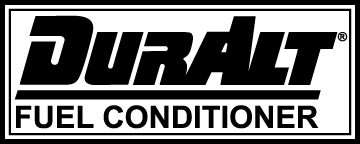Reducing Hydrocarbon Emissions from Your Engine
- Rich Lieber
- Aug 18
- 4 min read
Engines are essential to many aspects of modern life, powering vehicles, machinery, and equipment. However, they also contribute to air pollution through hydrocarbon emissions. Hydrocarbons are unburned or partially burned fuel components released into the atmosphere, which can harm the environment and human health. Understanding how to lower hydrocarbon output from your engine is crucial for cleaner air and better engine performance.
Understanding Lower Hydrocarbon Output and Its Importance
Lower hydrocarbon output means reducing the amount of unburned fuel released by your engine. When fuel does not burn completely during combustion, hydrocarbons escape through the exhaust. These emissions contribute to smog formation, respiratory problems, and environmental degradation.
Engines with poor combustion efficiency or faulty components tend to emit higher levels of hydrocarbons. Factors such as incorrect air-fuel mixture, worn spark plugs, or malfunctioning sensors can increase emissions. By focusing on lowering hydrocarbon output, you not only protect the environment but also improve fuel efficiency and engine longevity.
Key reasons to focus on lower hydrocarbon output:
Reduces air pollution and smog formation
Enhances fuel economy by ensuring complete combustion
Prevents engine damage caused by carbon deposits
Complies with environmental regulations and standards

Close-up view of a car engine's combustion chamber showing fuel injection system
Practical Tips to Achieve Lower Hydrocarbon Output
Achieving lower hydrocarbon output involves a combination of regular maintenance, proper engine tuning, and using quality fuel. Here are some practical steps you can take:
Regular Engine Tune-Ups
Schedule routine tune-ups to check and replace spark plugs, ignition wires, and air filters. Worn or dirty components can cause incomplete combustion, increasing hydrocarbon emissions.
Use High-Quality Fuel
Opt for fuels with proper octane ratings and fewer impurities. High-quality fuel burns more efficiently, reducing unburned hydrocarbons. Most major brands, as well as Costco, sell "top tier" gasoline. Engine manufacturers became concerned that existing fuels were not good enough for their engines and created the "top tier" category. This means that a sample of fuel has been sent to an independent lab and the fuel exceeded the federal standard for detergent additives. You will typically get better fuel mileage with a top tier fuel.
Maintain the Fuel Injection System - Use DurAlt® Fuel Conditioner
Clean or replace fuel injectors to ensure proper fuel atomization. Clogged injectors can cause uneven fuel distribution, leading to higher emissions. DurAlt® Fuel Conditioner not only cleans the fuel injection system, but it also removes carbon deposits from the engine and prevents their redeposit. It basically turns in fuel into a top tier fuel, and is guaranteed to save more than it costs. (www.GetDurAlt.com)
Check and Replace Oxygen Sensors
Oxygen sensors monitor the air-fuel mixture and help the engine control unit adjust fuel delivery. Faulty sensors can cause rich mixtures, increasing hydrocarbon output.
Ensure Proper Engine Warm-Up
Cold engines emit more hydrocarbons because fuel does not vaporize completely. Allow your engine to warm up before driving aggressively.
Avoid Excessive Idling
Idling wastes fuel and increases emissions. Turn off your engine when parked for extended periods.
By following these steps, you can significantly lower hydrocarbon output and improve your engine’s overall performance.

Eye-level view of a mechanic inspecting a car engine during routine maintenance
How to Control Hydrocarbon Emission?
Controlling hydrocarbon emissions requires both mechanical and chemical approaches. Modern engines use advanced technologies to minimize emissions, but older engines may need additional interventions.
Mechanical Controls
Exhaust Gas Recirculation (EGR): This system recirculates a portion of exhaust gases back into the combustion chamber, lowering combustion temperature and reducing hydrocarbon formation.
Catalytic Converters: These devices convert hydrocarbons into less harmful substances like carbon dioxide and water vapor through chemical reactions.
Improved Combustion Chamber Design: Modern engines have optimized combustion chambers that promote complete fuel burning.
Chemical Controls
Fuel Additives: Certain additives improve fuel combustion and reduce deposits that cause incomplete burning. DurAlt® Fuel Conditioner greatly improves fuel combustion improving fuel economy on average 8% to 10% while reducing harmful emissions up to 61%. DurAlt® improves engine performance and prevents engine hesitation when accelerating.
Engine Oil Additives: These help keep engine parts clean, reducing carbon buildup that can increase emissions.
Monitoring and Diagnostics
Use onboard diagnostics (OBD) to monitor engine performance and emissions.
Address any error codes promptly to prevent increased hydrocarbon output.
Implementing these controls can help maintain lower hydrocarbon output and ensure your engine runs cleanly and efficiently.

High angle view of a catalytic converter installed under a vehicle exhaust system
Benefits of Using Advanced Engine Treatments
Advanced engine treatments and additives can play a significant role in reducing hydrocarbon emissions. These products are designed to clean fuel systems, improve combustion, and protect engine components.
Advantages of engine treatments include:
Cleaner Fuel Injectors: Prevent clogging and ensure proper fuel spray.
Reduced Carbon Deposits: Keep combustion chambers and valves clean.
Improved Combustion Efficiency: Promote more complete fuel burning.
Lower Emissions: Help engines meet stricter environmental standards.
One such product is DurAlt® Fuel Conditioner, which offers a simple and effective solution to reduce hydrocarbon emissions. Using these treatments regularly can extend engine life and contribute to a cleaner environment.
Maintaining Your Engine for Long-Term Emission Control
Long-term control of hydrocarbon emissions depends on consistent engine care. Here are some ongoing maintenance tips:
Follow Manufacturer’s Service Schedule: Regular oil changes, filter replacements, and inspections keep your engine in top shape.
Monitor Fuel Quality: Avoid low-grade or contaminated fuel.
Keep Exhaust System Intact: Repair leaks or damage promptly to prevent emission spikes.
Drive Smoothly: Avoid rapid acceleration and heavy loads that increase emissions.
By adopting these habits, you ensure your engine continues to operate efficiently with lower hydrocarbon output.
Lowering hydrocarbon output from your engine is achievable with the right knowledge and maintenance practices. From regular tune-ups to using advanced treatments, every step counts toward cleaner air and better engine health. Start implementing these strategies today to enjoy the benefits of a more efficient and environmentally friendly engine.









Comments